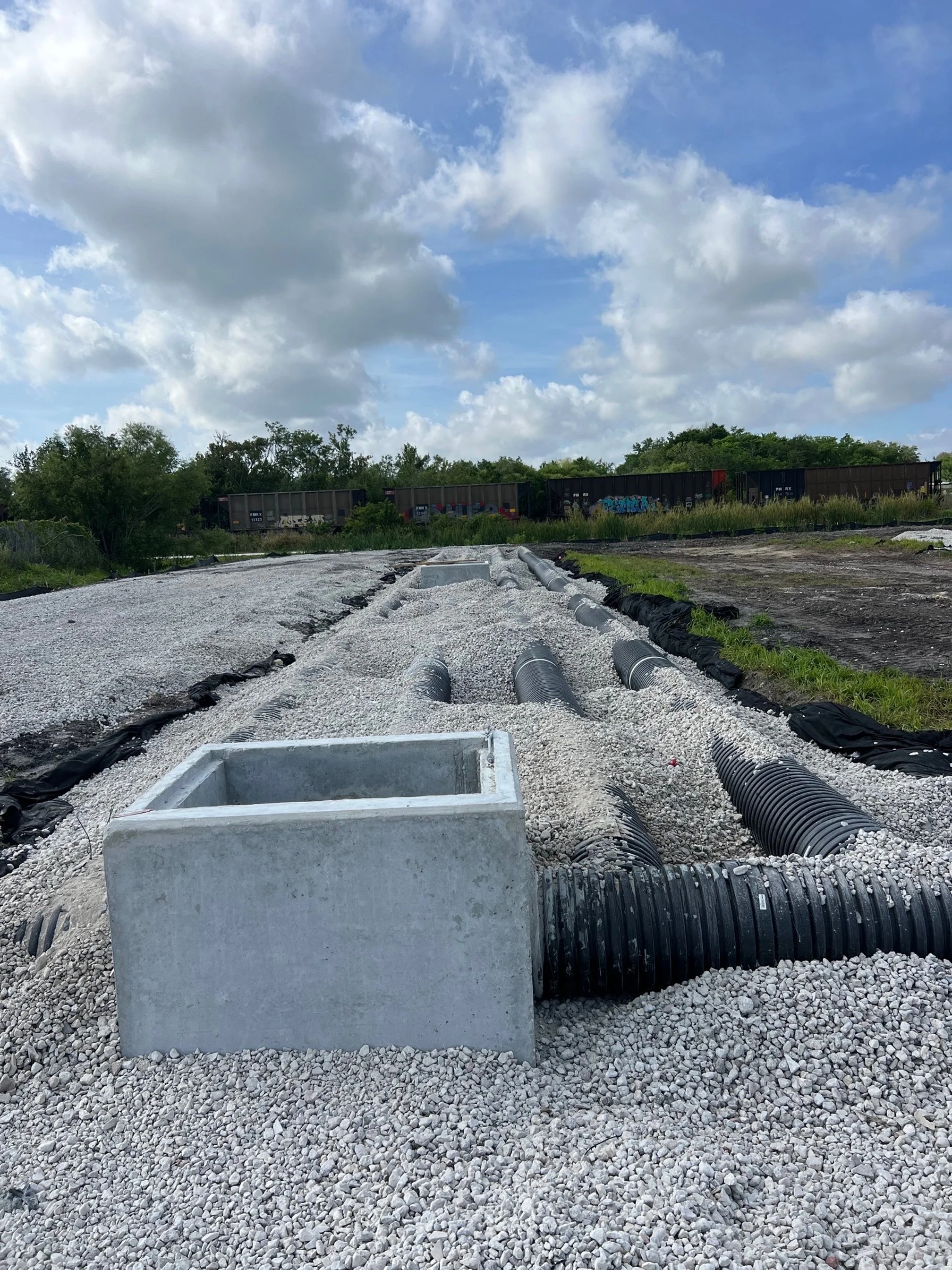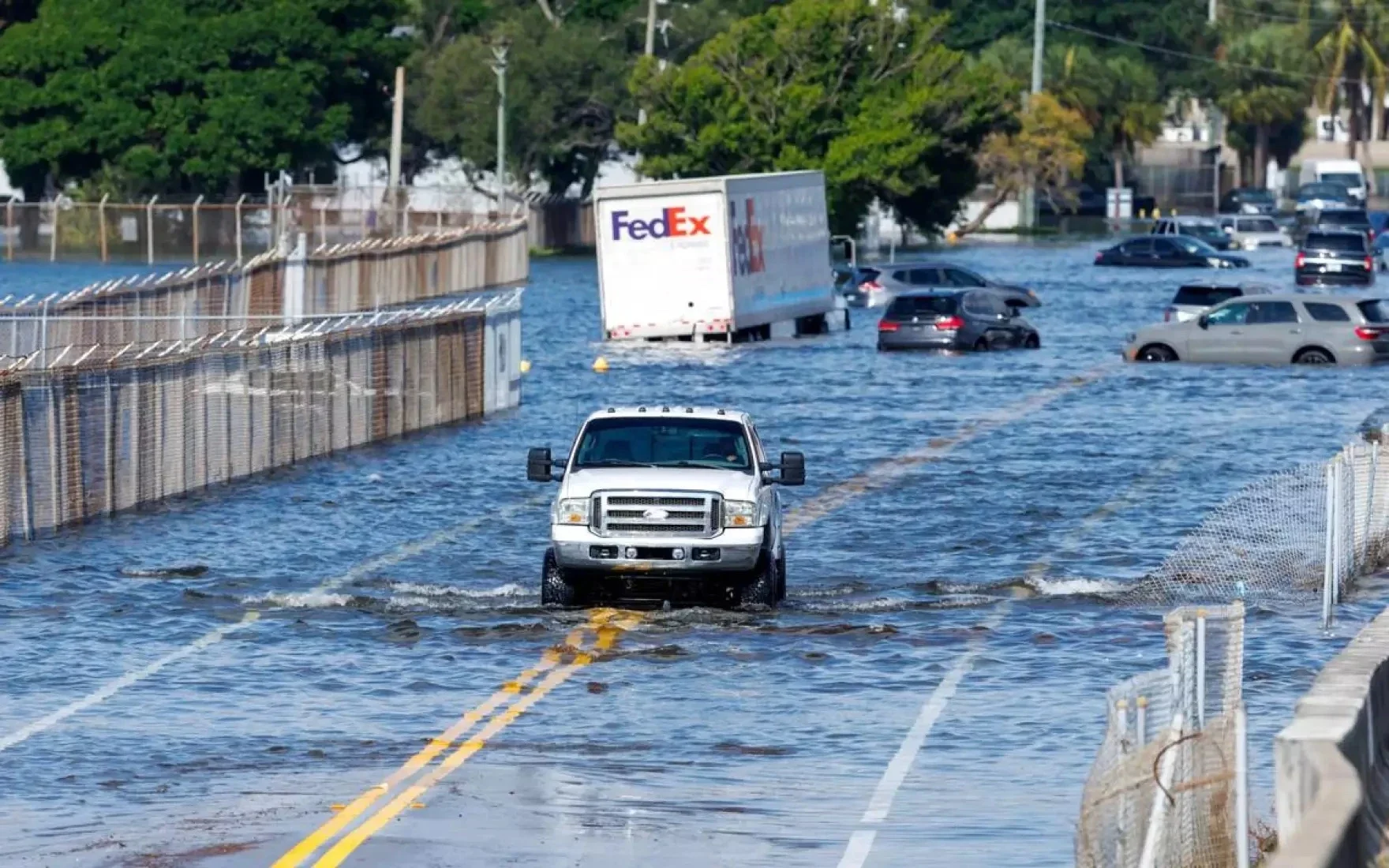The Best Way to Design for 100-Year Storm Events
How Civil Engineers Protect Florida Properties from Flood Risk
In Florida, where heavy rains and tropical storms are part of life, stormwater design isn’t optional—it’s essential. One of the most important benchmarks in drainage planning is the 100-year storm event.
But what exactly is a 100-year storm, and how do civil engineers design for it?
Let’s break it down.
What Is a 100-Year Storm?
A 100-year storm doesn’t mean it only happens once every 100 years. Instead, it refers to a storm event that has a 1% chance of occurring in any given year.
In South Florida, for example, a 100-year storm might mean 12 inches or more of rainfall within 24 hours. That much water can overwhelm streets, properties, and stormwater systems—unless the site has been properly designed to handle it.
Why It Matters in Florida Site Design
Because of Florida’s flat topography, low elevation, and frequent rainfall, managing stormwater is critical. Many counties—including Miami-Dade, Broward, and Palm Beach—require civil site plans to account for 100-year storm events as part of their drainage permitting process.
Failing to do so can lead to:
Flooding on your property and neighboring lots
Delayed permits or rejections
Costly retrofits after construction
Environmental violations or erosion
What Does Designing for a 100-Year Storm Involve?
Designing for a 100-year storm means planning your site to capture, hold, and safely discharge extreme rainfall.
This typically includes:
1. Accurate Rainfall Data
We use design rainfall intensities from local agencies like SFWMD, FDEP, and FEMA to model runoff volume for your location.
2. Drainage Modeling
Hydrologic and hydraulic modeling software helps us simulate how water flows across your site, how fast it accumulates, and where it will go.
3. Sizing Retention and Detention Systems
We calculate how large your swales, retention ponds, or underground vaults need to be to hold the volume from a 100-year storm—without flooding.
4. Emergency Overflow Design
Even if your system is at capacity, we design overflow routes to ensure water moves away from buildings, driveways, and sidewalks.
5. Coordination with Site Grading
We adjust grading to support positive drainage away from structures and maintain flow paths toward designated collection areas.
Common Solutions for 100-Year Storm Management
Each site is different, but some of the most effective strategies include:
On-site retention or exfiltration trenches
Grassed swales for open lot drainage
Underground stormwater chambers for tight urban areas
Pump-assisted drainage systems in flat or low-lying properties
Smart grading and sloping to prevent ponding
How RSP Engineers Designs for Resilience
At RSP Engineers, we specialize in civil site design that meets and exceeds Florida’s stormwater and flood control requirements. We work with developers, homeowners, and architects to create:
Drainage systems that are engineered to 100-year standards
Plans approved by counties and water management districts
Detailed grading and stormwater calculations
Site plans that protect your property for decades to come
Whether you’re developing in Miami, Tampa, Orlando, or anywhere in between, we can help.
Be Ready for the Storm—Before It Happens
Designing for 100-year storm events isn’t just about passing a code check—it’s about protecting your investment, your neighbors, and your future.
Need a drainage plan or stormwater design for your Florida site?
Let’s connect.











